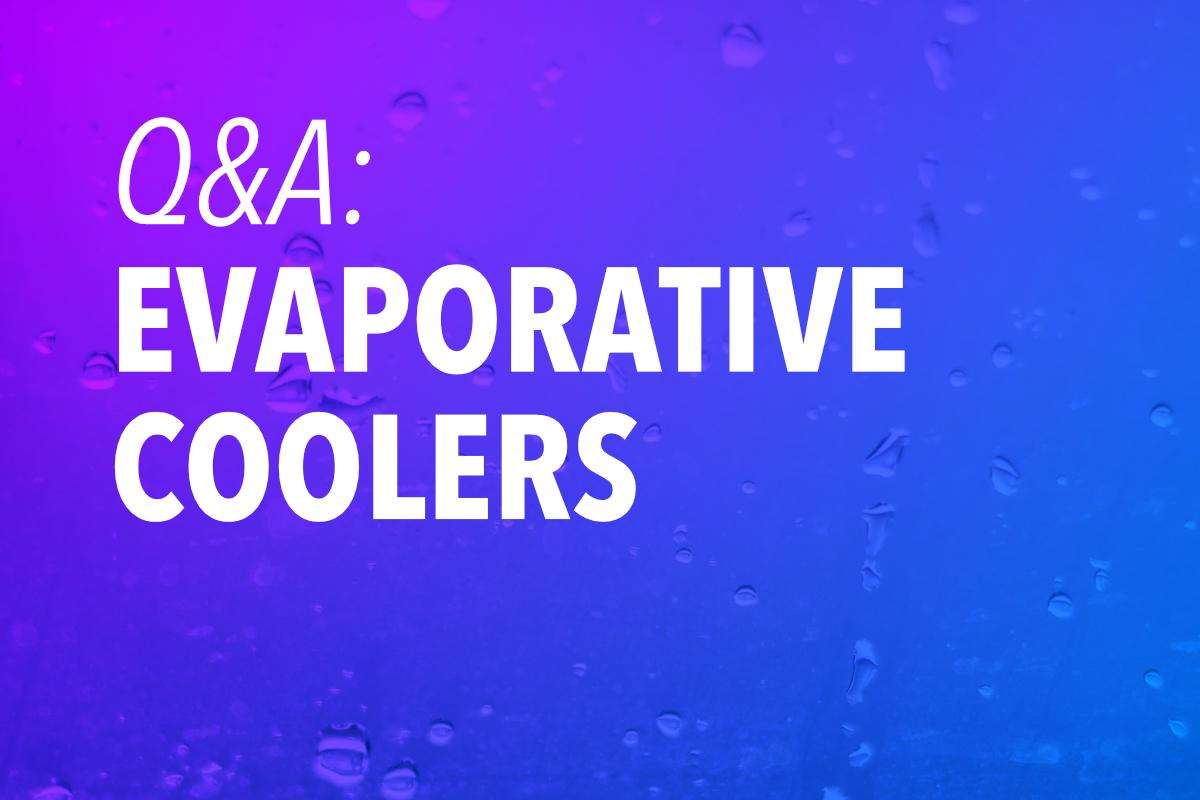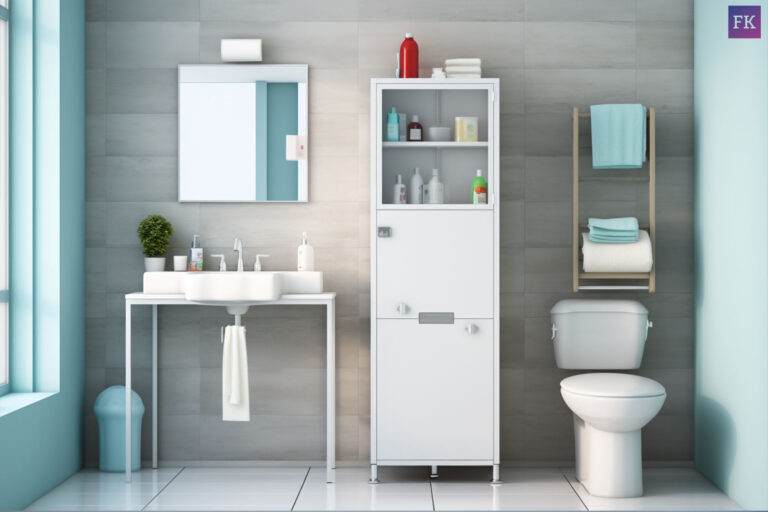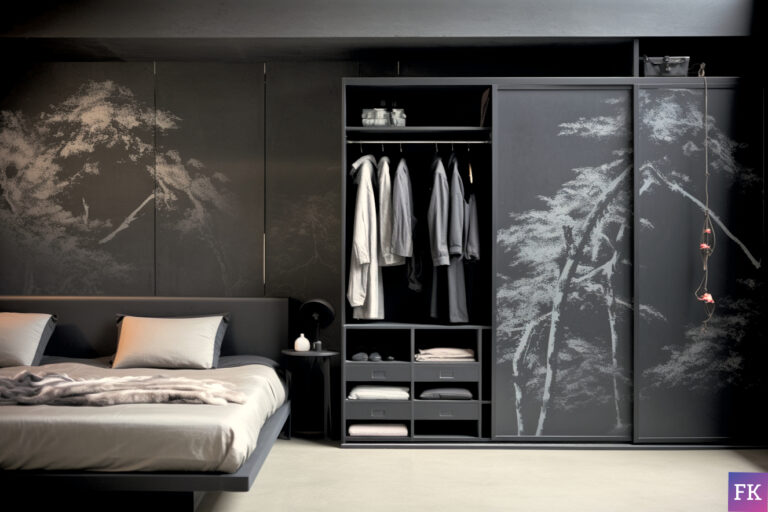Evaporative Coolers: The 18 Most Important Questions Answered
Answering your burning questions about evaporative coolers, that we hear so much about, and what you should use instead if in the UK.

Contemplating an evaporative cooler but not sure if it’s right for you? Check out our handy guide to learn how they work. It’ll help you make a decision whether investing in one is worth it or not!
What is evaporative cooling?
Evaporative cooling is a process of cooling a space by taking advantage of the cooling properties of water. It works by passing air through a moistened medium, such as pads or a wetted surface, which causes the air to become cooled. This technique has been used since ancient times and can be seen in many ancient civilisations.
Evaporative cooling works by evaporating water into the air, which removes heat energy from the surrounding environment. This is because when water molecules evaporate, they absorb a large amount of energy from the air around them in order to make the transition from liquid to gas. During this process, the surrounding air is cooled as a result.
It’s a cost-effective, energy-efficient form of refrigeration with no traditional refrigerant. Evaporative coolers (also known as Swamp Coolers) work by passing air over or through water soaked pads where the heat is dissipated and then blown out into the space.
The effectiveness of evaporative cooling varies depending on the climate and humidity levels. In warm and dry climates, evaporative cooling can be up to 30 degrees cooler than the ambient temperature. In more humid climates, however, the effect is much less pronounced because the air already contains a lot of moisture.
How do evaporative coolers work?
They work by drawing in warm, dry air from the outside and passing it through a wet filter or pad. As the air passes through the wet filter, it is cooled and humidified by the evaporation of water. The cooled, humidified air is then blown into the home, providing relief from the heat.
They’re much more economical than traditional air conditioning units, as they use far less electricity. They are also much better for the environment, as they don’t use ozone-depleting refrigerants like air conditioners do. In addition, they can be used in areas where air conditioning isn’t practical or feasible, since they don’t require an extensive duct system.
The key to making evaporative coolers effective is to ensure that the filter or pad is kept wet at all times. This can be done by filling the cooler with water on a regular basis, or by connecting it to a water source such as a garden hose or irrigation system. The cooler should also be regularly cleaned and maintained to ensure that it is working properly and efficiently.
Can they actually cool a room?
Yes, evaporative coolers can actually cool a room. These types of coolers work by evaporating water in order to lower the temperature of the air. This can be a great way to cool down a room quickly and efficiently.
Is it worth buying one?
Evaporative coolers have many benefits that make them worth the purchase. They are an energy-efficient way to cool your home, and they can also help improve air quality. Additionally, evaporative coolers are relatively low maintenance and can be used in a variety of climates.
What is the difference between an air conditioner and an evaporative cooler?
The main difference between air conditioners and evaporative coolers is how they work. Air conditioners use a compressor to circulate a refrigerant through a closed loop. As the refrigerant evaporates, it absorbs heat from the air, cooling it down.
Evaporative coolers, on the other hand, work by circulating water through a pads. As the water evaporates, it cools the air.
Another difference between air conditioners and evaporative coolers is their cost. Air conditioners are more expensive to purchase and operate than evaporative coolers. However, air conditioners are more effective at cooling the air than evaporative coolers.
What are the advantages of evaporative cooler?
Evaporative coolers have a couple of advantages over say, traditional air conditioners. They are much cheaper to operate and maintain, and they do not use refrigerants that can harm the environment. They also add moisture to the air, which can be beneficial in dry climates. evaporative coolers are also relatively simple to install and can be used in a variety of settings.
What are the drawbacks of evaporative cooling?
The main drawback of evaporative cooling is that it only works in hot and dry climates. If the air is too humid, the system will not work effectively. Another drawback is that the system can add moisture to the air, which can cause problems for people with allergies or respiratory conditions. Finally, evaporative cooling systems can be noisy and require regular maintenance.
Do evaporative coolers use a lot of electricity?
No, they don’t. Evaporative coolers use a lot less electricity than air conditioners. In fact, they use about one-sixth of the electricity that air conditioners use.
Do you need to have a window open with evaporative cooling?
No, you don’t need to have a window open with evaporative cooling. The way evaporative cooling works is by evaporating water to cool the air, so as long as there is a source of water, the evaporative cooler will work.
Can you leave evaporative cooling on overnight?
Yes, you can leave evaporative cooling on overnight as long as you have a timer or other mechanism in place to turn it off after a set period of time. However, it is important to note that evaporative cooling is not as effective in humid environments, so if the relative humidity is high, you may want to turn it off or use a different cooling method.
What size evaporative cooler do I need?
The size of the evaporative cooler you need will depend on the square footage of the space you need to cool. To calculate the square footage, multiply the length times the width of the room.
Once you have the square footage, multiply it by 30 to get the CFMR, or cubic feet per minute rating needed for your evaporative cooler.
For example, if you have a room that is 10 feet long and 10 feet wide, the square footage would be 100. To find the CFM, multiply 100 by 30, which would give you a CFM rating of 3,000.
How cold do evaporative coolers get?
In general, evaporative coolers will lower the temperature by about 10-15 degrees Fahrenheit, but this can vary depending on the specific unit and the conditions it is used in.
How long do they last?
Evaporative coolers typically last between 5 and 15 years. The lifespan of your evaporative cooler will depend on a number of factors, including the quality of the unit, how well it is maintained, and the climate in which it is used.
Air conditioning or evaporative cooling: which is best?
There is no simple answer to this question as it depends on a number of factors, such as the climate, the size of the space to be cooled, and the specific needs of the individual.
- Evaporative cooling is more energy-efficient than air conditioning and can be more effective in hot, dry climates. However, it is less effective in humid climates and does not work well in small spaces.
- Air conditioning is more expensive to operate than evaporative cooling, but it is more effective in humid climates and can be used in small spaces.
Ultimately, the best choice for cooling a space depends on the individual needs and preferences of the person using the space.
How much water do they use?
There is no definite answer as to how much water evaporative coolers use. It depends on the model and the climate conditions. Generally, evaporative coolers use less water than traditional air conditioners. In dry climates, evaporative coolers can use as little as 10 gallons of water per day.
Why are they called ‘swamp coolers’?
Evaporative coolers are also called “swamp coolers” because they use the same principle as a swamp does to cool the air. A swamp cooler works by evaporating water into the air, which then cools the air around it.
At what temperature does evaporative cooling stop working?
At temperatures below the dew point, evaporative cooling stops working. The dew point is the temperature at which water vapour starts to condense out of the air.
Do evaporative coolers need an air duct and water outlets?
Yes, evaporative coolers need an air duct and water outlet. The air duct is used to circulate the cool air throughout the room, and the water outlet is used to fill the reservoir with water.
Do evaporative air coolers work in the UK
No, evaporative air coolers will not work very well in the UK as they rely on hot, dry air to function properly. The UK has a humid climate which means that the air is too moist for evaporative air coolers to work effectively.
If you are looking for an air cooler for your home in the UK, we recommend that you consider a different type of air cooler such as a fan or an air conditioner.
Conclusion
We hope you enjoyed our evaporative coolers post and there was some helpful information for you in here. If you like our posts, please consider following us on social media and sharing our content with your followers.





